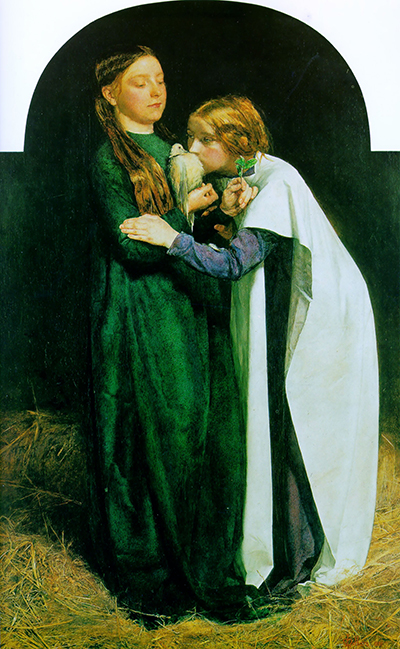The painting which was done by the 1st Baronet, Sir John Everett was completed in 1851 and was regarded as one of his greatest artistic achievement. It draws its subject from a biblical theme derived from Genesis 8:11.
It portrays the daughters of Noah standing on a floor made up of straws. The dove is perched in the right hand of one daughter who is also holding a sprig of olive with her left hand. The other daughter bends down to the kiss the dove. John Ruskin, a critic, and Theophile Gautier, an author, had a lot of admiration of this particular work. Originally, Sir John Everett had plans to include Noah’s figure and several animals in the background, as well but did not do so. The omission is said to have occurred because the painting was to be made ready for the Royal Academy earlier before the exhibition.
The style of the artwork is British and the technique used is wood-engraving whereby cuts are made on a wooden block using fine-pointed tools or a burin. The frame of the painting is original and the painting measures 212 millimeters in height and 134 millimeters in width. He drew the painting on a paper. In addition, below the image, there is an inscription of the painter's name and the title "Exhibition of the Royal Academy".
The artistic work was first commissioned by the Royal Academy of Arts which later displayed it first in public in the same year. Sir John Everett is said to have painted ‘The Return of the Dove to the Ark’ with astonishing fidelity and even tried to buy it back from the Royal Academy following an exhibition. Also, the Roman Catholics on seeing it on display had the belief that it was an allegory for the true faith which would finally return to the country.
The academy later sold the painting to Thomas Combe in March 1851 who then hang it between Holman Hunt's and Collin's paintings. Currently, the Ashmolean Museum, Oxford owns the painting among other collections of Thomas Combe. Sir John Everett technique of the painting indicates his opposition to the contemporary academic painting of the time. He drew most of his inspiration from his Pre-Raphaelite Brotherhood members Dante Gabriel Rossetti and William Holman who also shared the same ideas as his.




